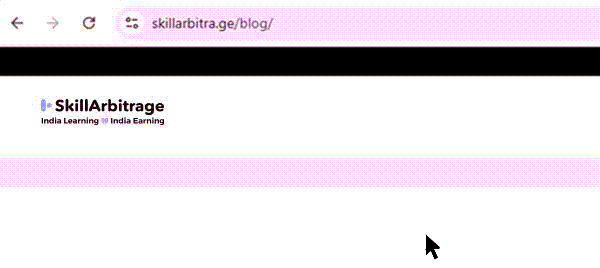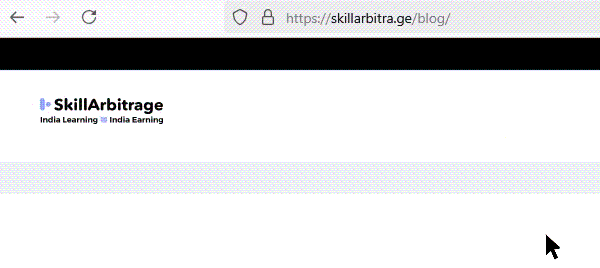Here, we explore copywriting techniques for Indian copywriters targeting US clients that 1) are too difficult to execute without AI, 2) can be executed at scale by a non-technical copywriter using AI, and 3) provide outsized value to the client, making the freelancer an irreplaceable asset.
Table of Contents
Introduction
Renowned copywriter Parvathishankar Dayanidhi Venkatanarasimhan Subramaniam Nair slept soundly and snored loudly in his opulent bed in his 3BHK flat in Thiruvanmiyur, Chennai. The silence of the night was shattered by his phone that suddenly rang at two o’clock. Parvatishankar woke up annoyed and picked up the phone. He looked exasperated, seeing the caller’s name on the screen, but took the call as if obliged.
“What is it, Ivan Ivanovich Ivanov? Why do you call me at this ungodly hour?” Parvathishankar snapped.
“Why have you left me, Parvathishankar Dayanidhi Venkatanarasimhan Subramaniam Nair?” the caller said plaintively.
“You know why, Ivan Ivanovich. You refused to invest in the AI tools I asked for.” Parvathishankar said.
“Please come back, Parvathishankar. I will do everything you say.” Ivan was desperate.
“It is no longer possible, for I have taken three new clients.” There was a finality in Parvathishankar’s voice.
“Parvathishankar, my email open rate has tanked, my social media engagement is in the gutter, and my customers are canceling subscriptions left, right, and center. When I escaped Russia in 1992, I had dreams of creating the world’s most successful lifestyle tech startup. I came to the US with a desire to be known.
But in the last few weeks, since you have left, my fragile dreams lay heavy on my shoulders, the delicate glass of my desires cracking, and an old fear replaces my dreams. I thought I had left this fear behind when I came to America. Do you know what fear it is?”
“What?”
“The fear of being forgotten. It is the one thing I cannot forget.” Ivan whispered.
Parvathishankar gave in, as he realized Ivan would be unshakable otherwise, “I comprehend your fear, Ivan Ivanovich, even though I have no such fear due to my copywriting skills.
I cannot join you again, but to assuage your mortal fear, I shall impart nine copywriting techniques that will help you not only gain new customers but, most importantly, keep them forever.”
What is memory-optimized copywriting?
Parvathishankar poured himself a cup of tea before launching into his lesson as Ivan waited with bated breath.
“Listen carefully, Ivan Ivanovich, for the story begins with my father. He was a thermodynamics professor at IIT Kanpur. A true legend in his own right,” Parvathishankar began thus.
“Just like you, Parvathishankar Dayanidhi Venkatanarasimhan Subramaniam Nair,” Ivan added eagerly.
“Just like me, Ivan Ivanovich Ivanov, just like me.” Parvathishankar looked satisfied with himself as he continued, “When my father explained a concept to his students, it was found that they could not forget that concept, even if they wanted to.”
“How is this possible, Parvathishankar?” Ivan’s curiosity was aroused immediately.
Parvathishankar paused for a bit. Ivan sweated on the other end. Finally, he said, “He used neuroscientific memory-optimized teaching techniques.”
“What are those techniques?” Ivan couldn’t hold himself any longer.
But Parvathishankar was lost down memory lane. “My father and I had many differences. He liked white, I liked black. He liked Amitabh Bachchan, I liked Akshay Kumar. He wanted me to be a professor like him, but I wanted to be a writer.”
“Parvathishankar, for the love of God – my business stands on the precipice of ruin!” Ivan cried out, near despair.
Parvathishankar sighed as if burdened by the weight of unspoken history. “Very well,” he said at last. He leaned forward, his voice now low and measured. “Memory-optimized copywriting is no ordinary craft. It is the art of making words unforgettable by aligning them with how the human brain retains information.
My father’s methods made his students retain knowledge for life. I took these very principles and wove them into my words so that brands might not merely be memorable but unforgettable.”
Ivan, stunned by this revelation, could barely form the words, “But Parvathishankar, even I try to write like that. What makes you so formidable at customer retention and not me?”
The difference between regular copy and memory-optimized copy
A ghost of a smile flickered on Parvathishankar’s lips. “Now, Ivan Ivanovich, I shall tell you what makes it so.” He leaned back, his voice barely more than a whisper.
“It is a mindset first and foremost. Regular copy is written with singular consumption in mind, while I write with the future in my eyes and long-term thinking in my pen. Regular copy is written linearly for immediate action, but my memory-optimized copy is modular and can be consumed over multiple touchpoints.
Regular copywriters give no thought to timing, but I write an entire, perfectly envisioned content plan.”
“You fascinate me, Parvathishankar. I had never thought about it this way.” Ivan’s mind was racing.
“The truth is, my dear Ivan, I do not write to be remembered. I write to haunt.”
Why AI?
“But you and I together could write memory-optimized copy ourselves. Why do you insist on AI tools?” Ivan couldn’t resist asking.
Parvathishankar tapped his temple. “Data, Ivan. Data is the key. What is remembered is what is reinforced. And AI doesn’t just help us write. It helps us see.”
He leaned in. “Before AI, personalization meant tweaking copy by hand – slow, imprecise, impossible to scale. Now? AI analyzes engagement patterns and generates subject lines tailored to each reader’s behavior. A single email campaign can have a thousand personalized variations, each crafted to maximize retention.
Before AI, we wrote content in silos. A blog was a blog, a tweet was a tweet. Now? An AI tool called Writesonic takes a single idea and adapts it into blogs, emails, and social media posts – each reinforcing the other, ensuring no message is forgotten.”
His voice dropped, almost conspiratorial. “And before AI, we could only hope our words worked. Now, Copysmith analyzes responses in real time, showing us what lingers in minds and what vanishes.
He leaned back. “I do not use AI to eliminate writing. I use AI to eliminate forgetting.”
Memory-optimization copywriting techniques for maximum retention
Parvathishankar was now in full flow. “Now, Ivan, take copious notes as I pour out the knowledge my father gave me. Drink of it so you may be satiated. I shall begin with the crown jewel of memory optimization techniques.”
Spaced repetition and interleaving
Hermann Ebbinghaus’s Forgetting Curve showed us how quickly we forget how much. The brain is an unforgiving killer of memories. Within 20 minutes, nearly 40% of new information is gone. By the end of the first hour, over 50% is forgotten. And within 24 hours? 70% is erased.
So, my father would reinforce his lessons to flatten the drop. And so I wrote spaced-out copy to ensure brand recall.
But, unlike my father, I don’t just repeat the concepts. I weave related ideas around each other. It’s called interleaving. Think of it like this. The mind is not a filing cabinet. It is a spider’s web of memories, associations, ideas, concepts, and desires. A novice stacks, but a master weaves.
Here’s an example for you. Day 1, the first impression. I hook the audience with a strong visual, a surprising turn of phrase. Day 3, the reinforcement. I write a case study where the product helped a real person or a company. The reader not only remembers but associates the brand with existing knowledge.
On day 7, just as they were about to forget, I hit them with a testimonial cementing the brand with usefulness and trust. Now imagine if you keep doing this on day 10, day 15, day 30. What do you get? Memory? No. Brand loyalty.
Emotions and storytelling
Humans invented stories to make sure that we don’t forget the things worth remembering. Emotions are reminders our brain sends to us. I incorporate them into my copy so that each piece pulsates with relevance in the reader’s mind. People forget facts, but they can’t forget how something made them feel. Any copywriter worth his salt uses this principle to make his audience feel through stories. This feeling then gets transferred to the brand, so they associate these positive feelings with it.
Von Restorff effect
Also known as the disruption and novelty effect. When everything is the same, everything is forgettable. What stands out is what stays in the mind. The shocking, the surprising, the unexpected. I use this principle to capture attention in the crowded marketplace.
Remember when you wanted to send an email with the subject line “Improve Your Team’s Productivity Today!” and I changed it to “Everything You Know About Productivity Is Wrong”? I was using this principle then.
Bold contrasts. Unexpected phrasing. Strategic formatting. An emoji in a sea of plain text. A sudden pattern break that makes the brain pause. These are weapons. Use them.
AI tools like Persado give you the exact words to achieve this effect. Writing novel and disruptive copy used to take days, and now it takes minutes.
Zeigarnik effect
Have you ever been talking to someone on the phone and their battery ran out? It drives you mad, doesn’t it? What were they going to say next? Those cliffhangers work in copy, too. People hate unfinished business, and they will click through a lot to finish it. These hooks drive the next action, not just the current action.
The customer has given you their email. How do you now get them to read the welcome email? You might write something like “Check Your Inbox” or something insipid like that. Not me. I write, “There’s one feature that changes everything – don’t miss it” or “You’re closer than you think. One click, and you’re in” or “Most people skip this step – and regret it later”.
How can I write so many of these in so many contexts for so many brands? AI lets me leverage the Zeigarnik Effect at scale.
Elaborative interrogation
Questions are doorways. They force us to explore. When you tell your customers, “Your productivity declines after lunch,” it may or may not lodge in their memory, but if you ask, “What causes the post-lunch productivity decline?” they become active explorers instead of passive consumers of information. That’s how you get user engagement.
AI detects flat copy and makes sure I never send a boring piece of content to my clients.
Multiple touchpoints
You can say the same thing repeatedly. Or you could say the same thing diversely. One makes your customers tune out, and the other makes them engage with you in multiple ways on multiple platforms. I show the visuals of a watch on Instagram, the features on Twitter, the benefits on email, and the glint of the sun from its platinum dial on YouTube.
AI lets me turn a blog into tweets, SEO articles, emails, and video scripts in minutes.
Behavioral triggers
Did you know that you can send emails, browser notifications, and SMS based on what your customer is doing? You can automate email chains with Mailchimp AI according to what your customer shows interest in. You can automate browser notifications with Notify AI.
You can send push notifications if there’s an abandoned cart in many other ways and drive actions based on user behavior. This can happen only if you have analyzed user behavior and written copy in advance for each situation.
Temporal landmarks
Ever noticed how gym memberships spike in January? Or why do people open investment accounts after birthdays? These are temporal landmarks – psychological reset points – where people feel primed for change. How many of these will you remember or derive manually? If you want to send updates on time, you will need AI to know the correct time.
Seventh Sense optimizes email send times for each recipient based on past open behavior. Boomtrain uses machine learning to send emails when users are most engaged. Optimail adapts email timing dynamically based on user interactions. Iterable automates personalized email and push notification timing based on user data. I could go on.
Modular content
“Have you played Lego, Ivan?” Parvathishankar shifted gears before continuing on his tirade. If you use Lego pieces creatively, you can make grand edifices with them. Your content should also be like Lego. Each piece of content can become a hook point for the next belief and the next action. Each tweet, each blog, or each Instagram post can become a pipeline into the next, keeping your customers engaged endlessly. If you write content as atomic pieces to be used, reused, remixed, and combined with other content pieces, each piece becomes a thoroughfare of user activity.
Wait, there’s more
Ivan exhaled sharply. “Alright, Parvathishankar, I get it. This is massive. And brilliant. But how does anyone keep all these principles straight? How do you plan a marketing strategy around this?”
“Ivan, my friend,” Parvathishankar said solemnly, “that is a question of great depth. A question that demands wisdom, patience, and – “A sudden rustling noise came through the line. “ – unfortunately, more time than I have at this moment.”
Ivan frowned. “What? Why?”
“My morning ablutions, Ivan. Nature’s rhythm is non-negotiable.”
“You’re ditching me to…”
“Think on it! Let the knowledge settle. When I return, you may already have your answer.”
The line went dead.
Ivan stared at his screen, momentarily speechless. He wasn’t sure whether to be amused or frustrated. Parvathishankar, the master of timing, had just left him hanging – literally.
Meanwhile, in Chennai, Parvathishankar set his phone down and exhaled.
A voice piped up from the doorway. “Father, I couldn’t help but overhear your conversation on the electronic telephone. What are you hiding from Ivan Ivanovich?”
Parvathishankar turned to his son, eyes twinkling. “The master always has one more trick up his sleeve.”
His son frowned. “What is this trick?”
Parvathishankar chuckled. “There is a trick, Raghunandan Parvathishankar Dayanidhi Venkatanarasimhan Subramaniam Nair. A trick that turns the student into the master.”
The boy’s ears perked up. “I want to be a master. A master of memory-optimized copywriting.”
Parvathishankar smiled knowingly. “I know. That’s why I’m going to tell you that trick. And not just that – when we’re done, you’ll have the tactics to get clients and execute memory-optimized copywriting with AI like a true master.”
The boy’s eyes gleamed. “When do we start?”
“Soon.”







 Allow notifications
Allow notifications
